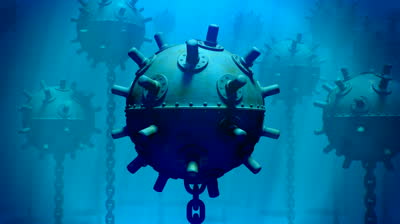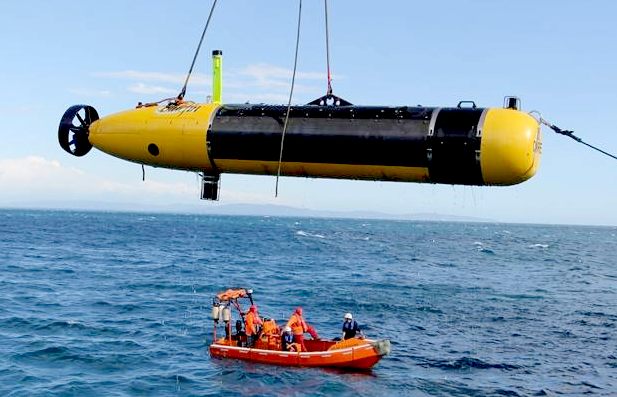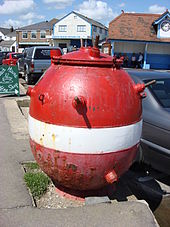








Naval mines may be classified into three major groups; contact, remote and influence mines.
Contact mines
The earliest mines were usually of this type. They are still used today, as they are extremely low cost compared to any other anti-ship weapon and are effective, both as a psychological weapon and as a method to sink enemy ships. Contact mines need to be touched by the target before they detonate, limiting the damage to the direct effects of the explosion and usually affecting only the vessel that triggers them.
Early mines had mechanical mechanisms to detonate them, but these were superseded in the 1870s by the "Hertz horn" (or "chemical horn"), which was found to work reliably even after the mine had been in the sea for several years. The mine's upper half is studded with hollow lead protuberances, each containing a glass vial filled with sulfuric acid. When a ship's hull crushes the metal horn, it cracks the vial inside it, allowing the acid to run down a tube and into a lead–acid battery which until then contained no acid electrolyte. This energizes the battery, which detonates the explosive.
Limpet mines
Generally, this mine type is set to float just below the surface of the water or as deep as five meters. A steel cable connecting the mine to an anchor on the seabed prevents it from drifting away. The explosive and detonating mechanism is contained in a buoyant metal or plastic shell. The depth below the surface at which the mine floats can be set so that only deep draft vessels such as aircraft carriers, battleships or large cargo ships are at risk, saving the mine from being used on a less valuable target. In littoral waters it is important to ensure that the mine does not become visible when the sea level falls at low tide, so the cable length is adjusted to take account of tides. During WWII there were mines that could be moored in 300m-deep water.
Influence mines
These mines are triggered by the influence of a ship or submarine, rather than direct contact. Such mines incorporate electronic sensors designed to detect the presence of a vessel and detonate when it comes within the blast range of the warhead. The fuses on such mines may incorporate one or more of the following sensors: magnetic, passive acoustic or water pressure displacement caused by the proximity of a vessel.
1RV17EC029
6th Semester Electronics and Communication Engineering
Lets get in touch and talk about your next project.